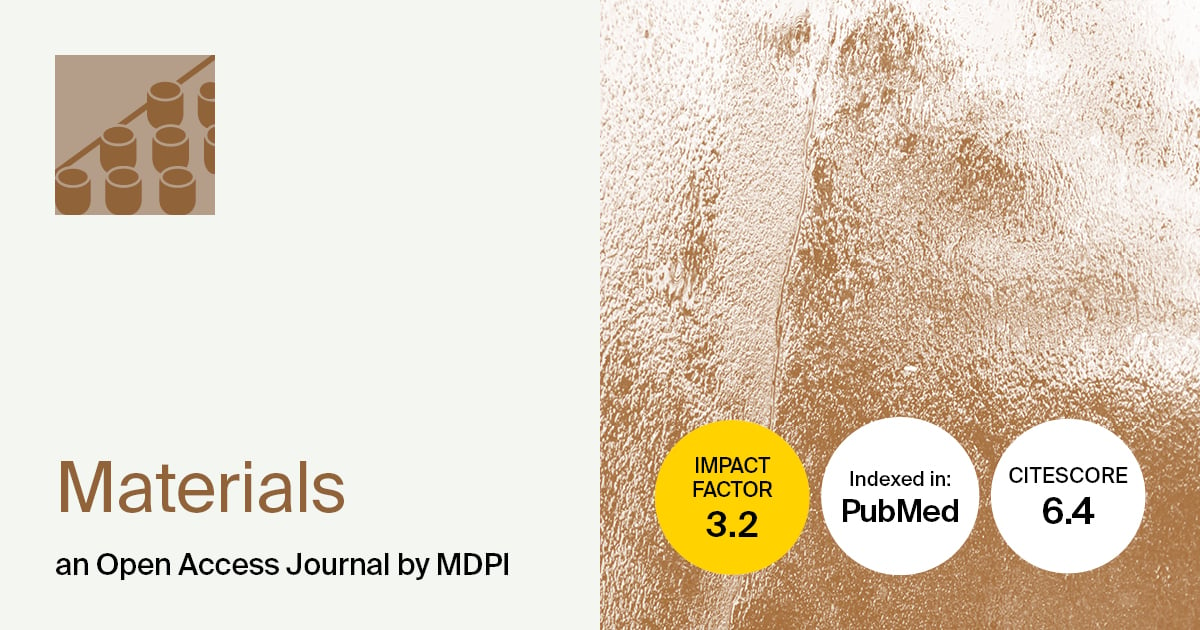
Journal Menu
► ▼ Journal Menu-
- Materials Home
- Aims & Scope
- Editorial Board
- Reviewer Board
- Topical Advisory Panel
- Instructions for Authors
- Special Issues
- Topics
- Sections & Collections
- Article Processing Charge
- Indexing & Archiving
- Editor’s Choice Articles
- Most Cited & Viewed
- Journal Statistics
- Journal History
- Journal Awards
- Society Collaborations
- Conferences
- Editorial Office
Journal Browser
► ▼ Journal BrowserNeed Help?
Announcements
27 August 2025
Materials | Scope Update

To further enhance the quality of Materials (ISSN: 1996-1944) and the papers published in it, under the guidance of our Editor-in-Chief, Prof. Dr. Maryam Tabrizian, the journal has updated and revised its scope. The original scope and the updated version are listed below.
|
Scope (new version): |
Scope (old version): |
The journal will not consider submissions that only present clinical cases, or that only cover geological and engineering applications of natural materials (e.g., soil, rocks, loess, basalt). |
|
For more detailed information, please visit the following link: https://www.mdpi.com/journal/materials/about.
Materials Editorial Office




